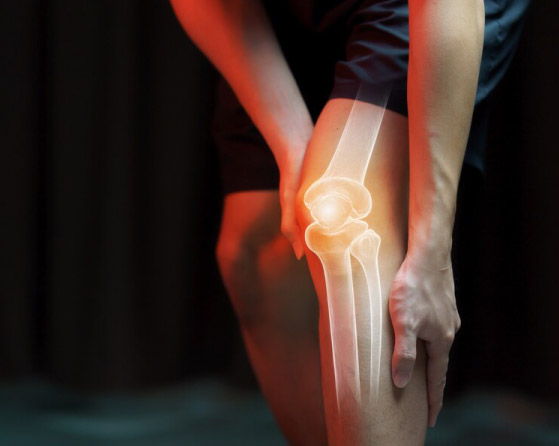- Call Us: +918547473627
- info@orthocareayurveda.com

Osteoarthritis of the knee happens when cartilage in your knee joint breaks down. When this happens, the bones in your knee joint rub together, causing friction that makes your knees hurt, become stiff or swell.
Osteoarthritis of the knee is very common. Approximately 46% of people will develop it during their lifetimes.
Women are more likely than men to develop osteoarthritis of the knee. Most people develop this condition after age 40. But other factors such as injury or genetics can cause it to happen earlier.
Knee pain is the most common symptom of osteoarthritis in the knee, making it painful for you to jog, run, climb stairs or kneel. It can also make your knees feel stiff or swollen. Over time, osteoarthritis of the knee can change the shape of your knee joint, making your joint feel unstable.
Other symptoms are:
Osteoarthritis of the knee happens when your knee joint cartilage wears out or is damaged. Articular cartilage is tough, rubbery tissue on the ends of your bones that lets you bend and move. Meniscal cartilage absorbs shock from pressure on your knee.
Your cartilage is like your car’s shock absorber, protecting your car from bumps and jolts. Drive on lots of rough roads, your shocks wear out fast. Drive on easy streets, your shocks last longer. You can wear out or damage your knee joint cartilage if:
Patient will be carefully evaluated and examined.
Marma and chiropractic modalities will be done to align the bony positions and ligament structures.
Massage and bandaging with special medicines will be done.
Followed by giving knee regenerative medicines and rasayana dravyas.
Followups will be advised to do marma corrections and procedures like agnikarma and rakthamokshana which are ayurvedic regerative modalities for normalizing the OA condition of knee even for the old-age people.